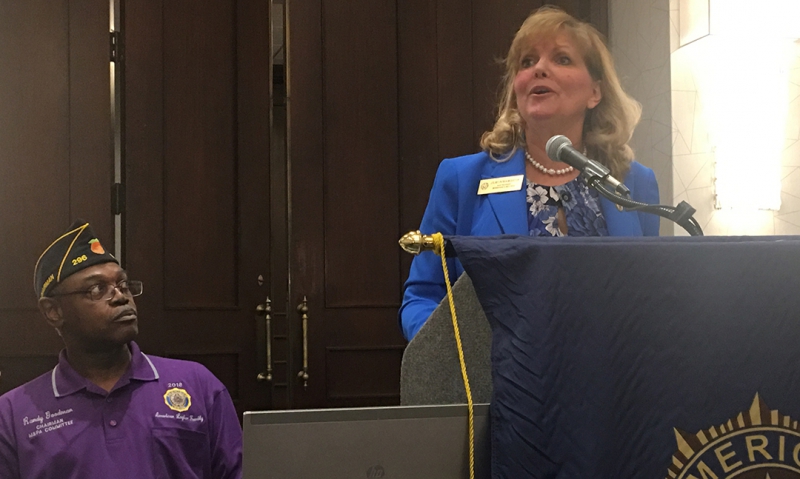
‘You have to ask people seven to 12 times to join’
Though not affiliated, the Association of the United States Army (AUSA) relied on the Army for membership recruitment. However, a few years ago the Army stopped recruiting for AUSA due to various reasons and with no recruitment plan in place, AUSA began to see a rapid decline in membership.
In 2017, with 62,000 members, AUSA put forth a challenge to its 121 chapters nationwide to reach 100,000 members by yearend. Today, AUSA stands at 116,000 members.
AUSA is a nonprofit military service organization that supports America’s Army (active, National Guard, reserve, civilians and family members) through training, scholarships, being a voice and more. Retired Lt. Gen. Patricia E. McQuistion, vice president of membership and meetings for AUSA and a member of American Legion Post 251 in Georgia, spoke to members of the Legion’s Membership & Post Activities Committee on Jan. 12 about ways the association exceeded its membership goal.
“We understand service to nation. We understand volunteerism. We understand that our association has a lot in common with The American Legion,” McQuistion said. “And we know through research that sometimes you have to ask people seven to 12 times to join. That’s one of the hardest things our volunteer leaders do … asking somebody to join.”
Membership recruitment and retention is the fifth tactic on the Legion’s strategic membership plan. With 16 million veterans eligible for Legion membership, McQuistion said if someone says no to joining the first time you ask, it’s not a rejection of you or The American Legion. “So don’t be afraid to go after them seven to 12 times,” she said.
Besides just asking potential members to join AUSA, other recruitment efforts that the association adopted included:
• Started a “Get One More” campaign and made it easy for new members to join online (https://www.ausa.org/). With this they used every event they were at as a membership recruitment opportunity. “I take it as a personal mission everywhere I go to get at least one person to sign up,” McQuistion said.
• Revamped membership fees. McQuistion said about 32 percent of the new recruits were of the younger generation of veterans and servicemembers. So AUSA created a special discount of a $10 membership fee for an Army E4 rank, Army civilians and ROTC cadets. They too created a two-year membership fee of $40 or five-year for $75 as a way to make retention easier.
• Connected with like-minded organizations. AUSA currently has relationship with six other associations, such as the Warrant Officers Association, as a way to not only attract new members but to gain a better understanding of the needs and issues of those servicemembers and to be a voice for them as well.
Past National Commander Dave Rehbein reflected on how the Legion can team up with like-minded organizations, such as Team Red, White and Blue, Team Rubicon, Summit for Soldiers or Student Veterans of America. “This new generation of veterans want to do things. They don’t want to sit in a meeting and hear about what’s being done. They want to be part of what’s being done,” Rehbein said. “So if we can use some of these organizations to bring in new members, I think we gain more than just new members – we gain active members.”
• Created a membership benefits pamphlet. The pamphlet makes it easy for volunteers to answer the question, “Why should I join AUSA?” It lists membership benefits, such as a subscription to ARMY Magazine that AUSA publishes, and features an infographic on the three reasons to join: give, get, save. “Give your time, talent and expertise; get representation with Congress and on Capitol Hill, access to professional development and education offerings, and scholarship opportunities; and save on exclusive AUSA benefits.”
McQuistion also shared that more than 85 percent of those who serve today entered the service after 9/11. This generation of veterans, she said, want to make a positive difference in their communities. “Young veterans today have families and jobs, but they are looking for ways to engage on their own terms. So when you ask a veteran or servicemember to join, get them involved at some level, make them feel a part of the organization,” McQuistion said.
“We have to be voices for our service people and their families so that more American’s understand not just the sacrifices but just the commitment of these people to serve our nation.”
